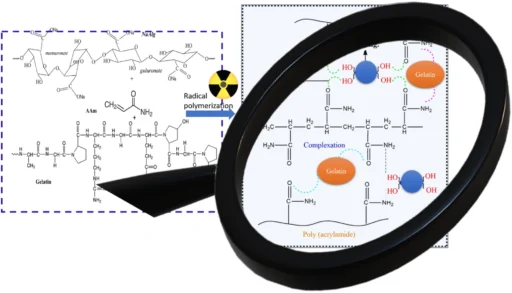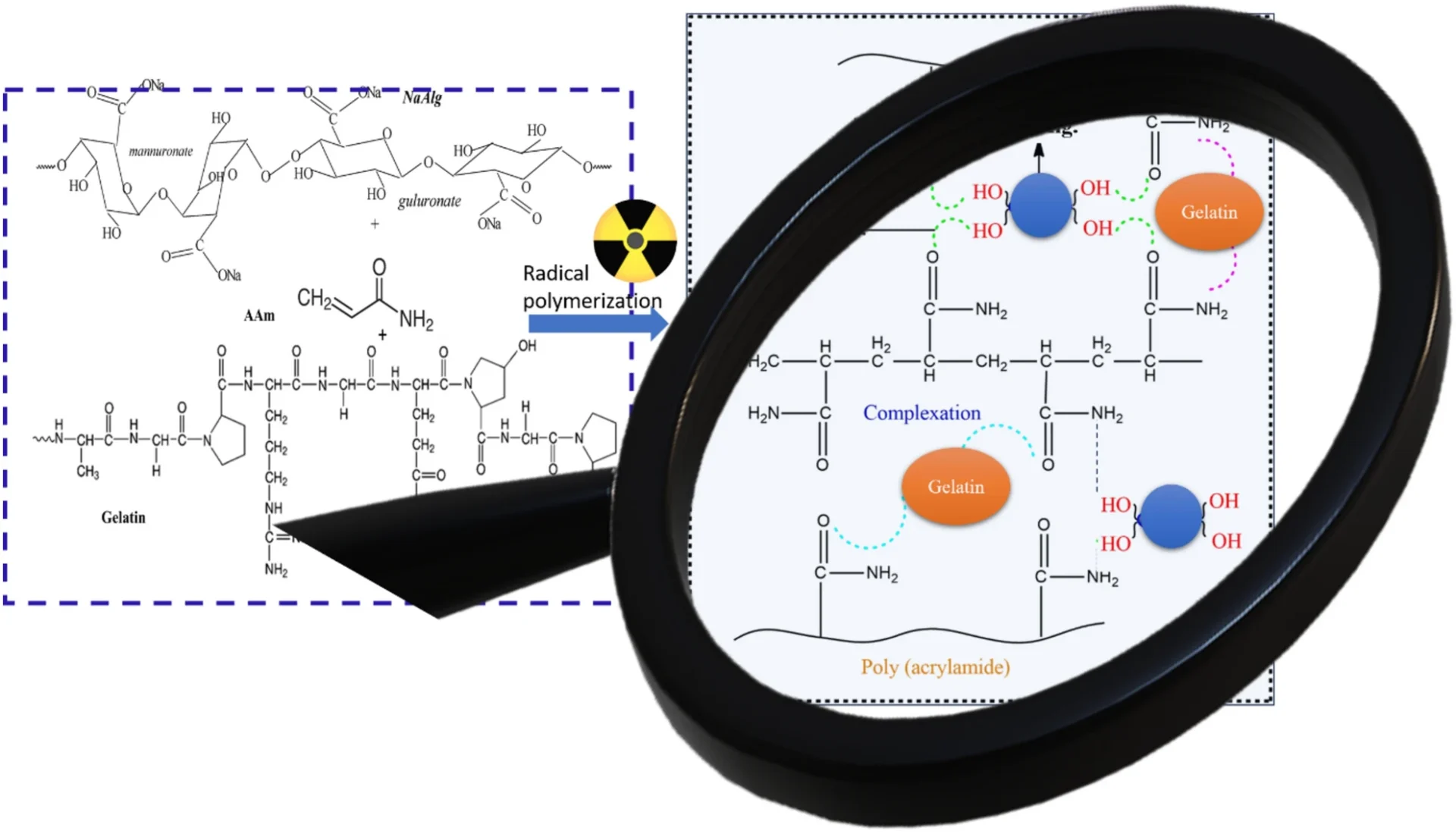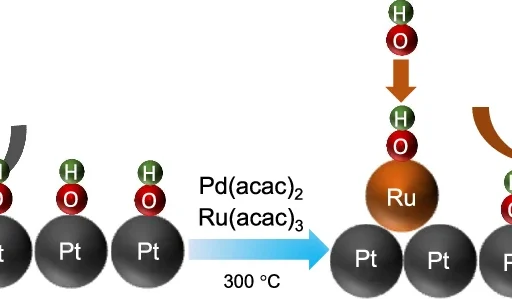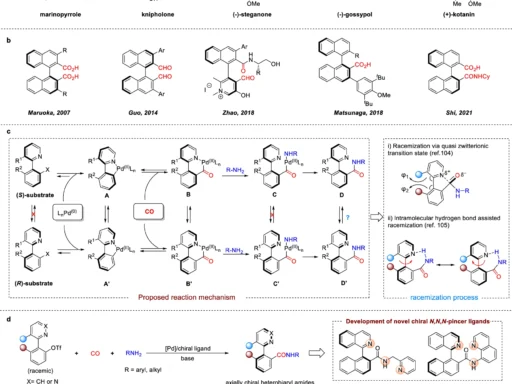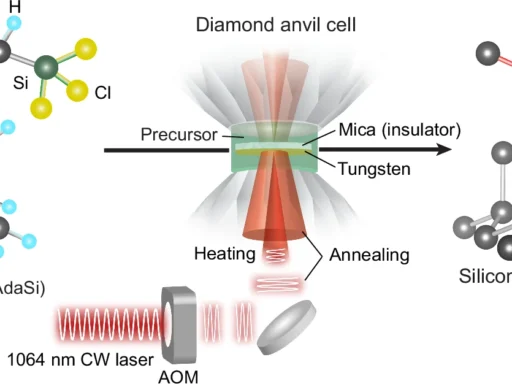Table of Contents
The opening statement of Sodium Alginate:
Agriculture serves as the fundamental support system of human civilization, and the effective management of water and nutrients is essential for maintaining agricultural output, particularly in areas susceptible to drought. An emerging technology in this field is the utilization of hydrogels, which are advanced polymers with the ability to retain large amounts of water in proportion to their weight. These hydrogels can greatly alleviate drought stress in crops, especially water-intensive crops like wheat. This article examines the process of using radiation to create hydrogels made of sodium alginate and gelatine. These sodium alginate and gelatine-based hydrogels have the potential to greatly improve water and nitrogen management in wheat production during drought circumstances.
Understanding Sodium Alginate/Gelatin-Based Hydrogels:
Hydrogels are water-absorbing polymers that can retain large quantities of water. Brown seaweed yields sodium alginate, a naturally occurring polymer known for its compatibility with living organisms, its natural breakdown, and its ability to form hydrogels when exposed to divalent cations like calcium. Gelatine is a protein derived from collagen. Due to its ability to form a gel and compatibility with biological systems, gelatine finds widespread application. The combination of sodium alginate with gelatine produces a synergistic hydrogel that exhibits improved characteristics, rendering it well-suited for agricultural applications.
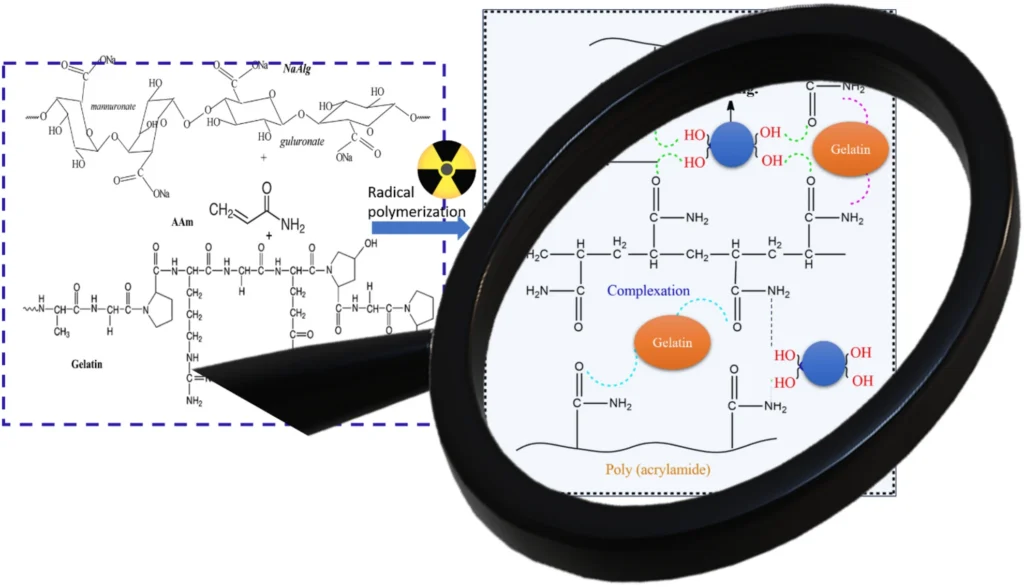
Radiation Synthesis: A Contemporary Approach
The advanced method of radiation synthesis of sodium alginate and gelatine enhances the characteristics of polymers like hydrogels. Ionizing radiation, like gamma rays or electron beams, is used in this method to expose the polymer components. This causes crosslinking and improves the hydrogel’s ability to absorb and keep its shape. Contrary to conventional chemical techniques, radiation synthesis does not necessitate the inclusion of chemical initiators or catalysts, rendering it a more sustainable and ecologically sound procedure. This approach also enables meticulous manipulation of the hydrogel’s characteristics, customizing it to meet specific agricultural requirements.
Properties of the highly absorbent hydrogel:
The sodium alginate/gelatin hydrogel produced via radiation is very absorbent and capable of retaining several hundred times its weight in water. The high water retention capacity is essential for preserving soil moisture in arid areas, guaranteeing sufficient water supply to crops such as wheat even during extended periods of drought. Moreover, the hydrogel possesses the capacity to assimilate and gradually discharge nitrogen, an essential element for the development of plants. Implementing this regulated discharge mechanism ensures that nitrogen is available to plants for a longer period, reducing the need for frequent fertilizer applications and reducing the occurrence of nutrient leaching.

Soil Mechanism of Action:
The hydrogel engages with soil particles upon application, increasing the soil’s ability to retain moisture. When it absorbs water, the hydrogel expands, effectively occupying holes in the soil and minimizing water loss due to evaporation. The hydrogel gradually releases the stored moisture to the plant’s roots, ensuring a steady water supply. The hydrogel additionally improves the soil structure, increasing its porosity and enhancing its ability to hold air, which is crucial for root respiration. Moreover, the hydrogel’s capacity to gradually release nitrogen contributes to the preservation of soil fertility, hence facilitating robust plant growth even in challenging circumstances.
Utilization of Wheat Cultivation in the Presence of Drought Conditions:
Wheat is an extensively grown crop on a global scale, yet it is extremely vulnerable to drought stress, which can significantly diminish crop production. The utilization of sodium alginate/gelatin-based hydrogels in wheat fields presents a pragmatic resolution to this issue. Hydrogels assist wheat plants in better managing drought situations by preserving soil moisture and delivering a consistent nitrogen supply. Studies have demonstrated that wheat cultivated in soils treated with hydrogel displays enhanced growth characteristics, such as greater biomass, improved root development, and higher grain production in comparison to plants grown in untreated soils.
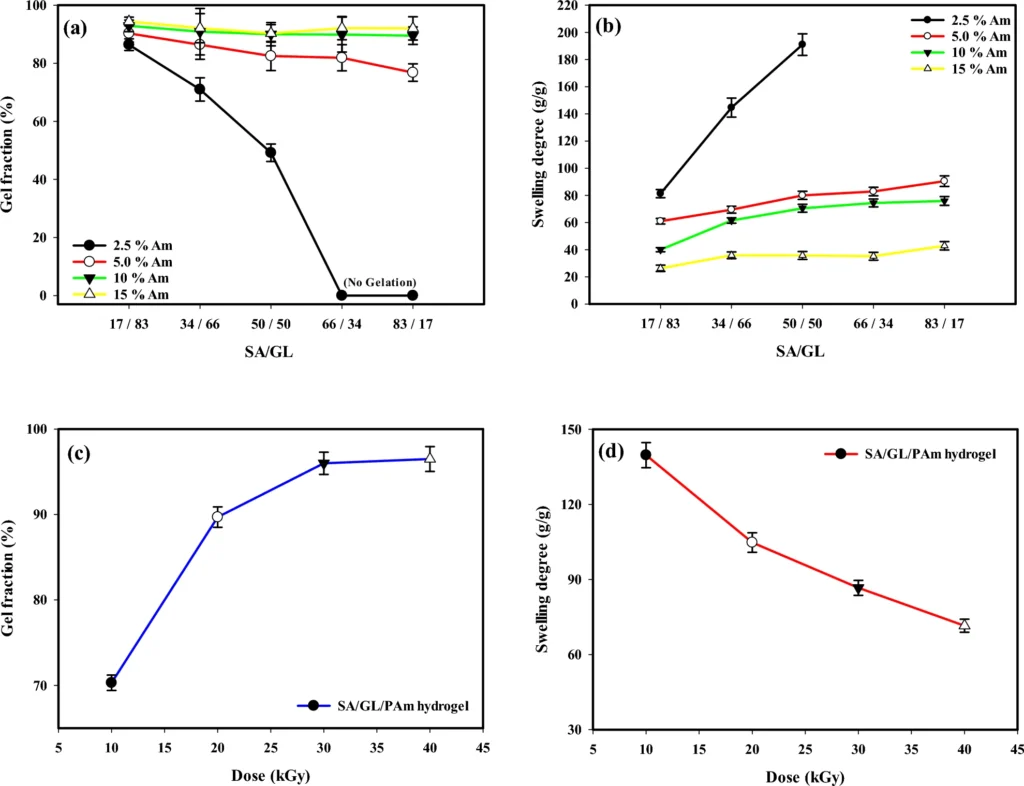
Hydrogels for Efficient Water Management:
Water is a valuable asset, and its effective utilization is crucial for sustainable agriculture. Hydrogels are critical in water conservation because they reduce the frequency of watering required for crops like wheat. The hydrogel’s water retention capacity guarantees that plants have continuous access to moisture, even in times of less rainfall. This not only aids in preserving agricultural productivity but also promotes water conservation, enhancing the sustainability of agriculture in countries facing significant water scarcity.
Optimising Nitrogen Usage in Wheat Farming:
Nitrogen is important for the growth and maturation of wheat; however, it poses significant difficulties in terms of nutrient management. Excessive nitrogen can lead to environmental problems such as water contamination, whereas insufficient nitrogen can impede plant growth. Hydrogels assist in this aspect by effectively holding nitrogen in the soil and gradually releasing it in response to the plants’ demands. This regulated discharge system improves nitrogen utilization efficiency, reducing the need for additional fertilizer applications and mitigating the risk of nitrogen seepage into groundwater.
Environmental and economic advantages:
Sodium alginate/gelatin-based hydrogels have substantial advantages in terms of both the environment and the economy. Hydrogels reduce costs in wheat production by decreasing water and fertilizer consumption, resulting in increased profitability for farmers. Furthermore, the biodegradable properties of these hydrogels guarantee that they do not gather in the soil, eliminating any potential long-term environmental hazards. The decrease in water and nitrogen runoff also helps to protect nearby water bodies from pollution, resulting in a more robust environment.

Obstacles and Constraints:
Although hydrogels offer various advantages, they also present certain obstacles in their application. A primary issue is the exorbitant expense associated with hydrogel manufacturing, which could provide a significant obstacle for small-scale farmers. Furthermore, it is imperative to do more research on the enduring impacts of hydrogel application on soil health and crop yield to ascertain the absence of any inadvertent repercussions. Another possible concern is the accessibility of hydrogels in rural regions, where there may be a limited supply of advanced agricultural resources.
Future Outlook and Areas for Further Research:
Researchers are currently conducting ongoing research to improve the performance and reduce the costs of hydrogel application in agriculture, suggesting a promising future for their use. Advancements in radiation synthesis provide the potential to create hydrogels that are even more effective, designed specifically for particular crops and environmental circumstances. Moreover, the prospect of expanding the application of hydrogel to other crops, apart from wheat, presents intriguing opportunities for enhancing worldwide food security. The significance of hydrogels in minimizing the effects of climate change on agriculture is expected to grow as time goes on.
Pragmatic Recommendations for Agriculturalists:
Farmers who are interested in utilizing hydrogels in their wheat fields should adhere to practical instructions to optimize the advantages. Apply the hydrogel during planting, either by incorporating it into the soil or directly applying it to the root zone. The quantity of hydrogel required will vary based on the soil composition and the particular circumstances of the field, but often, a tiny quantity can have a significant impact. Regularly monitoring soil moisture levels and adjusting irrigation strategies properly is crucial.

Provide examples of real-life situations and instances of achievement:
In several success stories worldwide, hydrogels have greatly impacted wheat agriculture. In water-scarce countries such as the Middle East and North Africa, farmers have observed significant enhancements in crop productivity by integrating hydrogels into their agricultural methods. Hydrogels have proven beneficial for farmers in drought-prone regions of India and China, as they enable constant crop production and help sustain their livelihoods despite unfavorable weather.
In conclusion:
Sodium Alginate, The utilization of radiation to synthesize ultra-absorbent hydrogels based on sodium alginate and gelatine is a notable breakthrough in agricultural technology. Hydrogels provide a viable approach for addressing the difficulties associated with water and nitrogen management in wheat farming, especially during periods of drought-induced stress. Hydrogels can help farmers achieve higher crop yields and preserve essential resources by promoting soil moisture retention and improving nitrogen use efficiency. As research progresses and technology becomes more available, the extensive utilization of hydrogels in agriculture could have a significant impact in guaranteeing global food security amidst the challenges posed by climate change.
Frequently Asked Questions:
1). What is the role of hydrogels in agriculture?
Hydrogels aid in the retention of water and nutrients in the soil, guaranteeing a consistent provision of these vital resources to crops, particularly in regions susceptible to drought.
2). What is the mechanism by which sodium alginate/gelatin hydrogels work?
Hydrogels can absorb substantial quantities of water and gradually release it over some time. Additionally, they hold and slowly release nitrogen, enhancing both soil moisture and fertility.
3). Can crops other than wheat use hydrogels?
Indeed, hydrogels have the potential to enhance water and nutrient management in various crops, especially in areas where water resources are scarce.
4). Are there any ecological hazards related to the utilization of hydrogels?
The biodegradability of sodium alginate/gelatin hydrogels ensures that they do not provide any long-term environmental hazards. Nevertheless, it is crucial to adhere to the rules when utilizing them to prevent any possible complications.
5). What is the duration of hydrogel persistence in soil?
The durability of hydrogels in the soil is contingent upon environmental factors and the precise composition, but they generally endure multiple growing seasons before complete degradation.
For more chemistry blogs, visit chemistry Master

